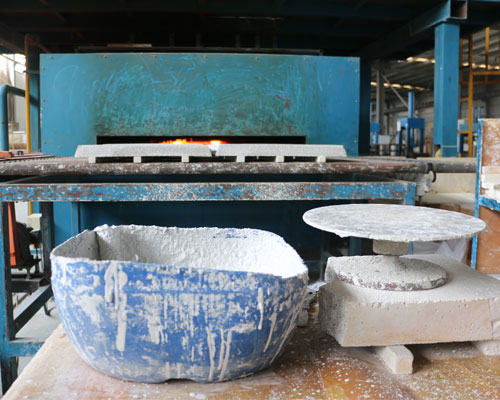The technique commonly used to make ceramic foam filters is called “sponge replication”. In this process, the polyurethane foam molten aluminium porous filter material is coated with ceramic slurry, then dried to form a green filter, and then fired. During the firing process, the internal polyurethane foam evaporates and the remaining ceramic bonds form a continuous network of ceramic struts, thus forming a foam structure similar to an exoskeleton, which can actively replicate the original polyurethane foam.
In the 1980s, 1990s and early 2000s, the ceramic of choice for aluminum filters was alumina particles bonded by phosphate-based glass. Such filters are relatively easy to produce and can work in most cases, but sometimes these filters suffer from mechanical failure and metal corrosion. Mechanical failure is believed to be the result of a high thermal expansion coefficient. Sometimes, the filter will be constrained in the ceramic bowl during the preheating process and cracked, or the filter will be catastrophically ruptured due to uneven preheating and the resulting stress. Metal corrosion is usually caused by the fact that magnesium and aluminum easily reduce phosphorus. Both types of failures may eventually cause harmful ceramic particles to enter downstream products.
The molten aluminium porous filter material has an open-cell structure with a distribution of connected voids, which are surrounded by a net of ceramic material. This structure is commonly used for molten metal filtration and is called ceramic foam in the industry.

The ceramic foam filter has the ability to resist chemical corrosion of molten aluminum alloy under typical use conditions, and the ceramic foam filter is light in weight.
The main porosity of the filter is given by the macroscopic structure of the foam because the filter is formed as the outer skeleton of the polyurethane precursor, thereby forming a replicated foam by coating with slurry, then drying and firing. The main pore size of the foam and the final filter is preferably at least 3 ppi to no more than 100 ppi, more preferably at least 20 ppi to no more than 70 ppi. Under standard commercial operation, a filter measuring 58.4 × 58.4 × 5.1 cm (23 × 23 × 2 inches) should be able to process 100 tons of metal in one casting.


